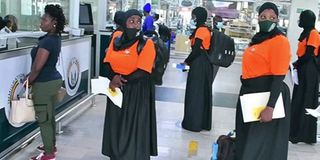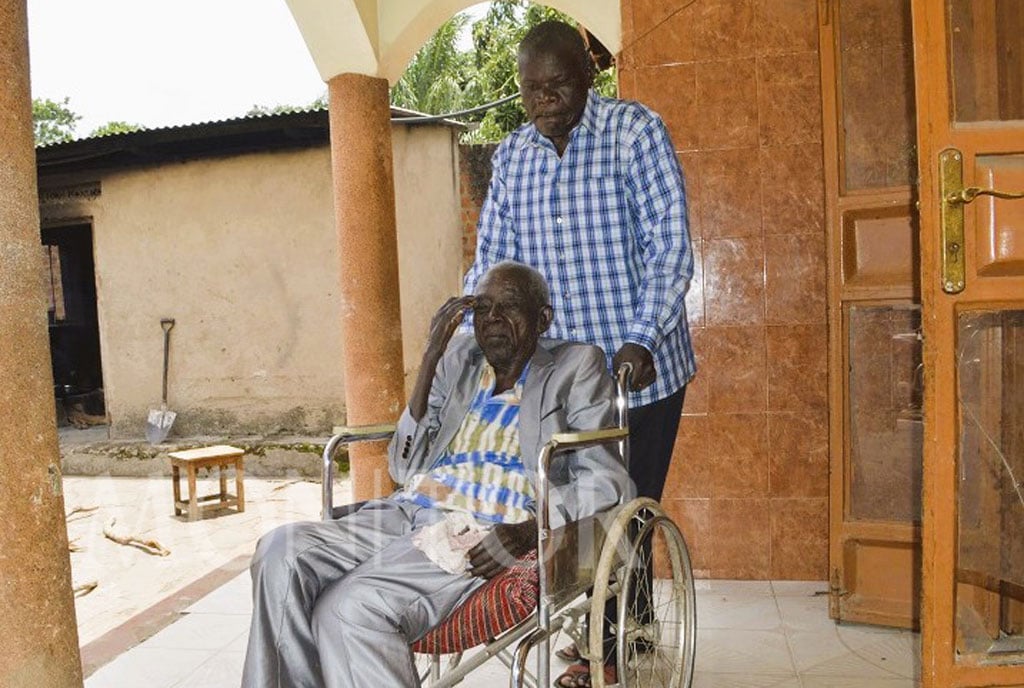Labour externalisation: Govt hits and misses

Some Ugandans wait to be cleared at Entebbe International Airport before they take a flight from Uganda to the United Arab Emirates (UAE) for work. A 2022 report by the Africa Institute for Strategy and Policy (AISP)—an Africa safe migration index—indicates that more than 195,000 Ugandan migrant workers are currently in Saudi Arabia. PHOTO | FILE
When the Cabinet sits tomorrow, it will decide whether to ban or uphold labour externalisation from Uganda to the Middle East.
The relentless wails of a section of workers, who mostly head to the Middle East to work as house-helps, has forced the government to have the uncomfortable conversation.
During the last sitting at State House, the Cabinet made an impromptu demand that Ms Betty Amongi, the Gender, Labour and Social Development minister, gives an update on the migrant workers.
Sources indicate that Ms Amongi was caught unawares and summarily asked to present a comprehensive report on the same tomorrow. This report will guide the Cabinet on how to proceed.
Hard information shows the labour externalisation industry plays an important role in addressing Uganda’s unemployment problem. It also earns forex through the remittances of migrant workers—said to account for about five percent of the Gross National Product as of 2021.
Experts say it would be erroneous for the government to ban the externalisation of labour to the Middle East.
Prof Ahmed Hadji, a researcher in labour externalisation services, urges Uganda to follow the template of the Philippines “which is so big on labour externalisation” and has “a very good system.”
Prof Hadji urges the government to follow the Philippine Overseas Labour Office Monitoring Model by setting up a semi-autonomous entity. He also proposes that a committee with five positions to oversee the migrant work be set up.
A migrant worker earns about $270 (Shs1m) per month for two years. This means the person is able to earn a gross income of Shs24m, some of which can be sent home.
A dataset released by the Gender ministry last year indicated that migrant workers totalled 9,967 in 2010, with majority in Iraq, Afghanistan and United Arab Emirates. This has grown three-fold, increasing to 28,233 by the end of April 2021.
The government data shows that at least 98 percent of migrant workers are in the Middle East, numbering 140,402. Most are employed as casual labourers, with only 0.2 percent holding professional jobs.
A further 1.8 per cent work in semi-professional placements.
Ms Betty Namugosa says she applied for an externalisation permit four years ago and she has since worked in Saudi Arabia and gained from the business.
“I have used the money I have been earning in the four years of my two contracts to educate my children, as well as setting up a catering service business as my side income,” Ms Namugosa, who separated from her husband on account of domestic abuse, says.
But not every migrant worker’s story has a fairy tale ending.
Ms Winnie Catherine Banura, the Uganda Association of External Recruitment Agencies (UAERA) secretary general, admits there is work to be done.
“This necessitated the development and implementation of an External Employment Management Information System. These measures and improved regulations within the sector have secured the future of migrant workers,” she says.
Workers welfare
A 2022 report by the Africa Institute for Strategy and Policy (AISP)—an Africa safe migration index—indicates that more than 195,000 Ugandan migrant workers are currently in Saudi Arabia.
The report also indicates that since labour externalisation gained traction five years ago, 90 cases of domestic violence are reported annually. Another 257 sickness and disease cases are reported every year, with 88 deaths.
The AISP report also indicates that labour externalisation contributes Shs4.5 trillion as revenue to the Gross Domestic Product. This is higher than coffee export receipts.





